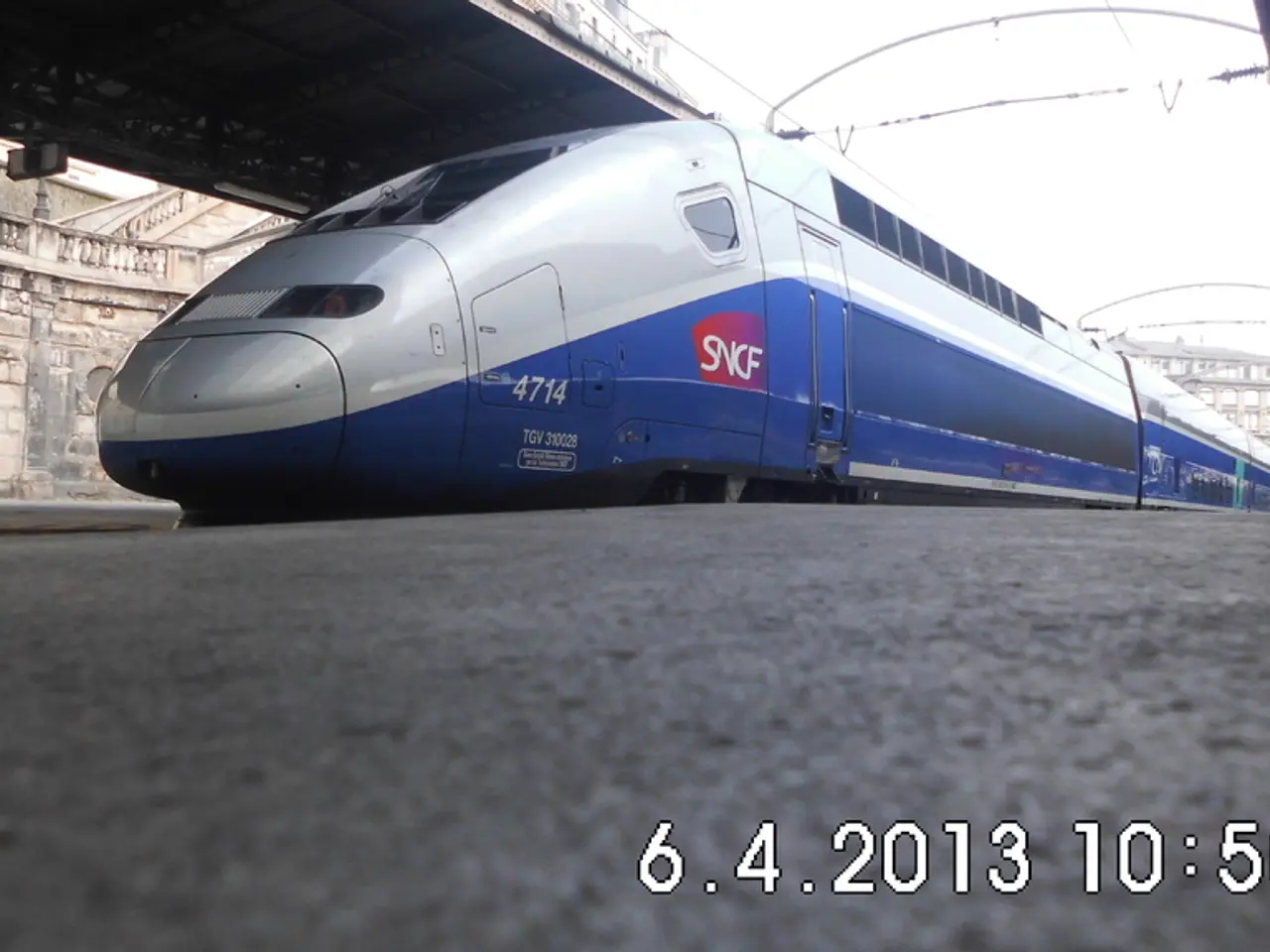Internet of Things (IoT) Impact on Supply Chain and Logistics - Advantages, Applications, and Obstacles
The world is witnessing an unprecedented transformation as Internet of Things (IoT) devices are increasingly being deployed across various sectors of the supply chain, including manufacturing, transportation, and distribution centers. This technological revolution is enabling professionals to gain visibility and collect data in real-time, streamlining operations and enhancing efficiency.
One notable example of IoT adoption in the supply chain is Maersk, the world's largest container shipping company. They utilise IoT to track car deliveries to their global vendors and employ Remote Container Management (RCM) technology to monitor the humidity, temperature, and location of containers, as well as the power connection status.
In the logistics sector, IoT solutions are proving to be invaluable. Appinventiv, a logistics software development company, has developed ActiDrive, an IoT-based application that allows drivers to focus on the road while having complete control of mobile devices in a touch-free setup.
The benefits of IoT in supply chain management are manifold. IoT solutions enable professionals to promptly assess the products in stock and their condition, react quickly to any changes in the status of orders, and improve inventory management by collecting and analysing stock levels and inventory positions in real-time.
However, the implementation of IoT in logistics and supply chain is not without its challenges. Key issues include data security and privacy concerns, integration difficulties with legacy systems, maintaining sustainable network connectivity, and managing the large volume of data to extract actionable insights.
Data security and privacy are paramount in the digital age. IoT devices generate massive amounts of sensitive data across the supply chain, elevating risks of cyberattacks and data breaches. Ensuring encrypted data flows at device, network, and cloud levels, employing zero-trust architectures, blockchain-based access controls, and frequent security audits are critical measures to mitigate these risks.
Integration with legacy systems is another hurdle. Many supply chains rely on outdated ERP and warehouse management systems not designed for smart device connectivity. This leads to costly and complex middleware or API customisation efforts, slowing down IoT adoption and causing workflow interruptions.
Sustainable network connectivity is essential for IoT functionalities. Internet service disruptions or inadequate network capacity can impair IoT operations. Establishing reliable, high-speed network infrastructure and robust server support is key for continuous operations.
Data management and analytics present another challenge. The sheer volume of data generated can overwhelm systems, making it difficult to filter noise and generate meaningful, real-time insights to support decision-making. Implementing advanced data pipelines, real-time analytics solutions, and scalable cloud platforms is necessary to convert raw IoT data into actionable intelligence.
Finally, workforce and technology adaptation is crucial. The shift towards Industry 4.0 requires upskilling workers, adapting to new technologies, and ensuring organisational resilience in the face of digital transformation challenges. Ethical and privacy concerns related to AI and IoT usage must also be managed.
Addressing these challenges involves a combination of technical solutions, infrastructure investments, process strategies, and organisational readiness. Partnering with experienced IT providers can facilitate smoother implementation and reduce disruption risks.
As the global IoT end-users solutions industry is expected to reach a market share of $1.6 trillion by 2025, it is clear that IoT technology is a prominent solution being adopted in the global supply chain networks to analyse and provide solutions to the unprecedented difficulties faced. From agriculture to automotive, every phase of the supply chain, from retail to manufacturing, is affected by IoT.
In agriculture, Aker uses IoT to ensure that raw output is appropriately assessed, packaged, and delivered without sacrificing quality. They use drones, 3D video cameras, big data technologies, and machine learning to quickly assess crop damage caused by insects, disease, and other variables.
In the transportation sector, IoT technology can improve supply chain efficiency by providing real-time location tracking, determining where and when goods are delayed in transit, planning detours, and keeping track of storage conditions. IoT offers live monitoring and tracking capabilities, making the supply chain and transportation of goods simple to oversee and organise.
Volvo employs a networked cloud-based system to track the delivery of auto parts from several nations using IoT. IoT applications in logistics can include real-time location tracking, warehousing and inventory management, fleet management, data analytics, self-driving vehicles, and drones for deliveries.
In conclusion, the adoption of IoT in supply chain management can lead to numerous benefits, including improved efficiency, better inventory control, and process automation. However, it is essential to address the challenges associated with data security, privacy, integration, network connectivity, data management, and workforce adaptation to ensure a smooth transition to Industry 4.0. Partnering with experienced IT providers can facilitate this transition and help businesses reap the full benefits of IoT technology.
- As Maersk, the world's largest container shipping company, demonstrates, machine learning can be effectively employed in the supply chain through Remote Container Management (RCM) technology, which monitors humidity, temperature, location, and power connection status.
- The integration of machine learning into the supply chain can provide valuable benefits, such as real-time inventory management and improved efficiency, but it also raises concerns about data security and privacy, requiring the use of encrypted data flows, zero-trust architectures, and frequent security audits.




